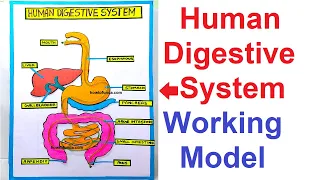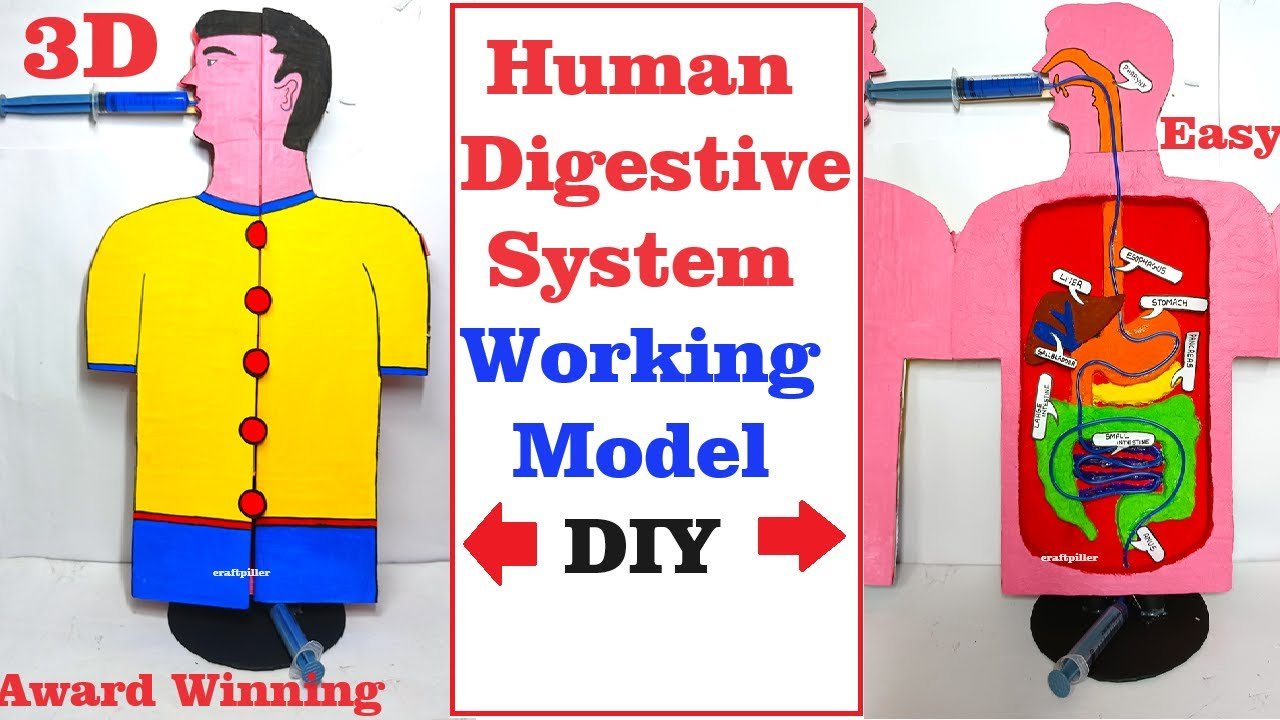Introduction
The human body is a complex machine that needs energy to function. This energy is derived from the food we eat.

However, food cannot be directly used by our body in its original form. It must be broken down into simpler molecules like glucose, amino acids, fatty acids, and glycerol that can be absorbed and utilized by cells.
This entire process of breaking down food into simpler, absorbable forms is called digestion.
The human digestive system is a group of organs working together to perform digestion, absorption, and elimination.
It begins at the mouth and ends at the anus, involving several mechanical and chemical processes.
Understanding the digestive system is essential as it highlights how the body extracts nutrients from food and maintains life.
Definition of Digestive System
The digestive system is defined as the organ system responsible for breaking down food into nutrients, absorbing these nutrients into the bloodstream, and eliminating indigestible waste materials.
Functions of Digestive System
The human digestive system performs several vital functions:
- Ingestion – Intake of food.
- Mechanical Digestion – Physical breakdown of food into smaller particles (chewing, churning).
- Chemical Digestion – Breaking down food molecules using enzymes, acids, and digestive juices.
- Absorption – Nutrients pass into the bloodstream for distribution to body cells.
- Assimilation – Utilization of absorbed nutrients for growth, energy, and repair.
- Egestion – Elimination of indigestible and waste material as feces.
Structure of the Human Digestive System

The digestive system consists of the alimentary canal and the associated digestive glands.
1. Alimentary Canal (Digestive Tract)
The alimentary canal is a long muscular tube that extends from the mouth to the anus, about 9 meters in length.
(a) Mouth and Oral Cavity
- Digestion begins in the mouth.
- Teeth cut, grind, and chew food (mechanical digestion).
- Saliva, secreted by salivary glands, contains the enzyme salivary amylase, which begins the breakdown of starch into maltose (chemical digestion).
- The tongue helps in mixing food with saliva and forming a bolus for swallowing.
(b) Pharynx and Esophagus
- The pharynx is a common passage for food and air.
- The epiglottis prevents food from entering the windpipe.
- The esophagus is a muscular tube that moves food to the stomach by peristalsis (wave-like muscular contractions).
(c) Stomach
- The stomach is a J-shaped muscular organ.
- Gastric glands secrete gastric juice containing:
- Hydrochloric acid (HCl) – kills bacteria and provides acidic medium.
- Pepsin – enzyme that digests proteins into peptides.
- Mucus – protects the stomach lining from HCl.
- Food is churned and mixed with gastric juice, forming a semi-liquid substance called chyme.
(d) Small Intestine
- The small intestine is about 6 meters long, divided into three parts: duodenum, jejunum, ileum.
- The duodenum receives bile juice from the liver and pancreatic juice from the pancreas.
- Bile emulsifies fats (breaks them into small droplets).
- Pancreatic enzymes digest carbohydrates, proteins, and fats.
- Intestinal glands secrete enzymes (maltase, sucrase, lactase, peptidases, lipase).
- The inner lining has finger-like projections called villi, which increase surface area for absorption of nutrients.
(e) Large Intestine
- About 1.5 meters long.
- Absorbs water and minerals.
- Houses useful bacteria that produce vitamins (e.g., Vitamin K).
- Forms and stores feces.
(f) Rectum and Anus
- Rectum stores fecal matter.
- Anus expels waste from the body through the process of defecation.
2. Digestive Glands
Several glands assist digestion by secreting digestive juices.
- Salivary Glands – Secrete saliva containing salivary amylase.
- Liver – Largest gland, secretes bile, which emulsifies fats.
- Pancreas – Produces pancreatic juice containing amylase, lipase, and proteases.
- Gastric Glands – Located in the stomach; secrete HCl, pepsin, and mucus.
- Intestinal Glands – Secrete enzymes that complete digestion.
Digestive Process: Step by Step

- Ingestion (Mouth) – Food intake and chewing with saliva action.
- Propulsion (Esophagus) – Movement of bolus to stomach.
- Digestion (Stomach & Small Intestine) – Proteins digested by pepsin, carbohydrates by amylase, fats emulsified by bile.
- Absorption (Small Intestine) – Glucose, amino acids, fatty acids absorbed into blood and lymph.
- Assimilation – Nutrients transported to cells for energy and growth.
- Egestion (Large Intestine, Anus) – Removal of waste.
Enzymes of the Digestive System
| Enzyme | Source | Function |
|---|---|---|
| Salivary Amylase | Saliva | Starch → Maltose |
| Pepsin | Stomach | Proteins → Peptides |
| Lipase | Pancreas/Intestine | Fats → Fatty acids + Glycerol |
| Maltase | Small Intestine | Maltose → Glucose |
| Sucrase | Small Intestine | Sucrose → Glucose + Fructose |
| Lactase | Small Intestine | Lactose → Glucose + Galactose |
| Trypsin | Pancreas | Peptides → Amino acids |
Importance of Digestive System
- Provides energy for all body functions.
- Supplies raw materials for growth and repair.
- Regulates water and mineral balance.
- Helps maintain immunity (gut bacteria).
- Eliminates harmful waste from the body.
Diseases and Disorders of Digestive System
- Acidity and Ulcers – Excess secretion of HCl damages stomach lining.
- Diarrhea – Frequent watery stools due to infection.
- Constipation – Difficulty in passing stools.
- Jaundice – Due to liver dysfunction and bile accumulation.
- Appendicitis – Inflammation of appendix.
- Indigestion – Improper breakdown of food.
- Gastroenteritis – Infection of stomach and intestines.
Ways to Maintain a Healthy Digestive System
- Eat a balanced diet rich in fiber, fruits, and vegetables.
- Drink plenty of water to aid digestion and absorption.
- Avoid junk food, excessive fats, and spicy items.
- Exercise regularly to improve metabolism.
- Practice proper hygiene to prevent infections.
- Eat meals at regular intervals and chew food properly.
Conclusion
The human digestive system is one of the most vital systems that sustains life by providing energy and nutrients. From ingestion to egestion, each organ plays an essential role.
The process is a perfect example of how various organs and enzymes coordinate to maintain health. A healthy digestive system ensures proper growth, immunity, and overall well-being.
By following a balanced diet, regular exercise, and healthy habits, we can maintain our digestive system and lead a healthy life.

